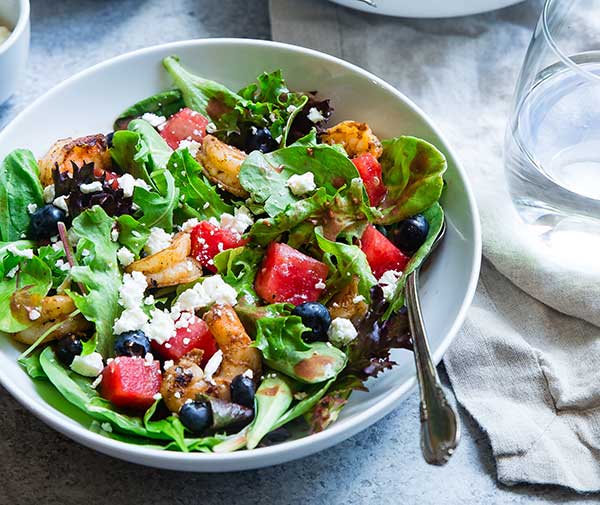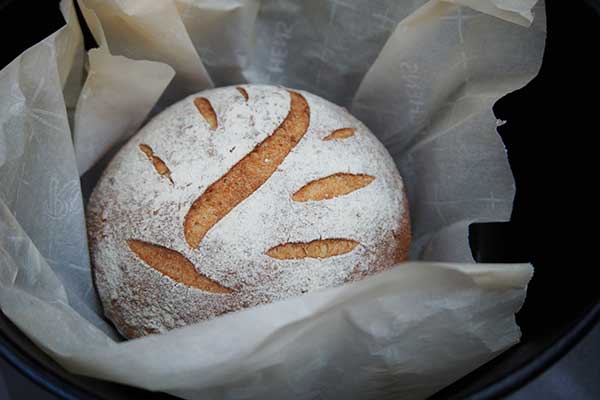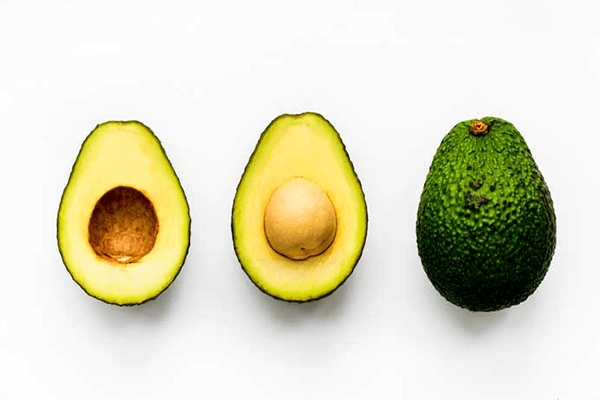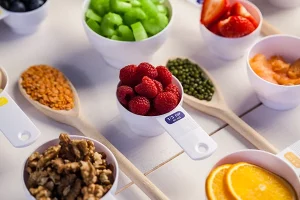As a restaurant owner, one of the most difficult decisions you have to make is what ingredients you are going to include in your dishes. In making this decision, there are many factors at play. What are the typical customers’ tastes based on the geography and overall demographics of my restaurant’s location? What local ingredients are available to me? Do I have a balance of healthy, average, and savory offerings? When your kitchen is finally stocked, you always wonder if it is stocked with the right things. It is at this point that you should do your best to adopt the “quality over quantity” mindset. Ingredients that are healthy and versatile can be used in abundance on your menu if proper consideration is taken in selecting them.
That’s where we come in.
We know it’s hard to pick healthy, appealing ingredients that are also cost-effective and can be used in a multitude of dishes. For this reason, we’ve selected 7 “must-have” ingredients for your kitchen in 7 different categories: legumes, vegetable and fruit salads, seasonings and herbs, gourmet bread, whole grains, fats from fruits and vegetables, and seeds. As you will see, these ingredients not only have numerous health benefits, but they’re tasty, popular, and can be incorporated into several different appetizers and entrees. Start reading for some serious healthy food-spiration!
Read more: Restaurant Technologies that Improve Business
Lentils (Beyond Soup)
Categorized as a “legume”, lentils provide numerous health benefits and can be incorporated into nearly every dish, including soups, salads, and main courses. Low in calories and high in iron and protein, lentils are not only heart-healthy but simple to prepare. Lentils are packed with necessary vitamins such as Vitamin B, magnesium, zinc and potassium. As a significant source of protein, they can take the place of meat to appeal to vegetarian customers or those who are especially conscious of their red meat intake due to heart conditions. Lentils also contain several phytochemicals, which are plant compounds that help combat diseases of the heart as well as diabetes. Some ways you can incorporate this healthy legume into your menu are:
- Soup (we had to include it on the list. It’s delicious!)
- Vegetable and Lentil Stir Fry
- Masala
- Lentil and Chickpea Salad
- Lentil and Couscous Salad
- Lentil Curry
- Lentil Tacos or Taco Salad
Read more: A Simple Guide to Different Types of Vitamins
The Fruit and Veggie Combo “Super” Salad

We hear about “superfoods” all the time in the food industry. Some are appealing to customers and some make them say “What is THAT?” But when you get those creative juices flowing and combine delicious vegetables and fresh fruits to create a tasty, light, and healthy salad, we call that a “super meal”. While combining vegetables and fruit might make the taste buds a bit tentative, there are surprisingly several combinations that are delicious and complement each other in terms of flavor and texture! Check out this example:
Spinach-Berry Salad
Ingredients:
- Blueberries (washed)
- Raspberries (washed)
- Blackberries (washed)
- Spinach leaves
OPTIONAL:
- Goat or feta cheese
- Raw walnuts
- Balsamic vinegar and olive oil (dressing)
The benefits of this salad are hard to match. You’re eating a significant source of iron with your spinach and getting all of those extra antioxidants from the assortment of berries. If you want to add some more flavor to the salad, throw in some goat or feta cheese and walnuts to top it off.
Read more: The Truth about Diabetes
Spice It Up with Turmeric
Originated in India thousands of years ago, turmeric is one of the most beneficial nutritional supplements as a result of its medicinal properties. Originally used as a medicinal herb, turmeric is now more commonly known as a household spice used to give curry its bright color. Turmeric is beneficial because of the compounds it contains called circuminoids. Circumin, the main ingredient in turmeric, not only has several antioxidants but works as an anti-inflammatory product as well. Curcumin has been proven to increase overall brain function and health and lower risk of brain diseases in general. Additionally, it decreases the risk of heart disease because of its positive impact on the blood and has also proven to improve symptoms of arthritis and digestive problems. We know what you’re thinking, and here are some ways you can incorporate turmeric into your menu:
- Turmeric-seasoned chicken
- Chicken curry
- Curried cauliflower soup
- Frittatas with turmeric seasoning
- Turmeric-seasoned tofu scramble
- Turmeric-ginger tea (after dinner for digestion)
Read more: Bringing Nutritional Analysis Home
Healthy Bread? Sign me up.

Unfortunately, as we know it’s very difficult and expensive to make healthy, delicious bread that will satisfy customer cravings. So, we had to get a little creative here. Don’t let the spelling of this next item scare you because, we promise, it will be not only a healthy but unique and tasty addition to your menu. Its primary ingredient is a grain called “Einkorn”, which is the most ancient form of wheat on earth. Unlike many wheat products, Einkorn comes straight from the source and does not go through any genetic alterations as its made. This results in a fresher product as well as less digestive problems for those who may be sensitive to gluten. The bad side of this is that this ingredient is largely unavailable in the U.S. and is more popular in Europe. However, it is definitely worth taking a look at how it’s made if, for nothing else, the cultural aspect and to inspire you to incorporate less popular ingredients into your dishes!
Read more: Nutrition Analysis Software Versus Chemical Laboratory Testing: Which is Better?
Quinoa for the Carb-Conscious
Quinoa has become more popular in recent years due to its successful substitution for rice, pasta, and other starchy carbohydrates. This can be especially lucrative if you have carb-conscious or gluten-free/sensitive customers. High in protein and wheat-free, both red and white quinoa provide a significant source of calcium, magnesium, manganese, dietary fiber, and vitamins B and E. Most impressively, since it is a complete protein, quinoa contains all nine essential amino acids. The versatility of quinoa also makes it a valuable ingredient to have as part of your restaurant’s menu. It can be served as part of breakfast, lunch, or dinner dish. See some examples below.
- Quinoa “Oatmeal” with agave nectar and fresh berries
- Quinoa salad
- Curried quinoa (let’s mix and match with some turmeric here!)
- Quinoa bowl with chicken, avocado and teriyaki sauce
- Quinoa stuffed peppers
- Chicken and quinoa soup
- Quinoa chowder or chili
- Tofu, quinoa and vegetable stir-fry
Read more: Food Labeling Modernization Act: Why it Matters for Food Manufacturers
The “Good” Kind of Fat

Yes! There is such a thing! Good fats are everywhere. In fact, distinguishing “good” fat from “bad” fat is one of the most common errors people make when reading nutrition labels. Often, when consumers see a high number next to the fat content category, they immediately look for something else because we are conditioned to believe that all fat is bad. We at MenuSano (The Nutritional Analysis Software) know that this is not the case, and these customers are probably missing out on the great benefits of monounsaturated, or “healthy” fats. These benefits include weight loss, decreased risk of heart disease, increased metabolism, improved insulin sensitivity and decreased inflammation. Change this common misconception in your restaurant by offering some of these fat-filled, delicious dishes!
- Avocado toast
- Avocado salad with balsamic vinegar, salt, and pepper
- Assorted olives (appetizer)
- Tapenade (appetizer)
- Omelets and other egg-based dishes
- Assorted nuts (appetizer)
Although these fats are “good”, keep in mind that moderation is key and you don’t want to overload dishes with monounsaturated fats. In essence, pay attention to portion size when incorporating these ingredients.
Read more: 5 Ways to Add more Fiber
Pistachi-WHOA
As we’ve discussed already, nuts are an excellent source of protein and monounsaturated, or “healthy”, fats. Let’s get specific now and talk about pistachios: a deliciously sweet and salty but that is loaded with nutrition and can be incorporated into countless dishes. In addition to being high in protein and healthy fat, pistachios are high in antioxidants and potassium, low in calories, help to boost metabolism and promote healthy gut bacteria which leads to easier digestion. Additionally, studies have proven that pistachios may lower cholesterol, blood sugar and blood pressure, and are rich in vitamin B6. Vitamin B6 is important for regulating blood sugar and transporting oxygen in red blood cells. Check out a few of many different ways to incorporate pistachios into your daily menu.
- Pistachio-crusted chicken, salmon or pork
- Any salad + pistachios
- Roasted beet, goat cheese, and pistachio salad
- Potato or ricotta gnocchi with pesto and pistachios
- Pasta with pistachio pesto
Read more: The Future of the Food Delivery Industry
Now What?
Excited to try out some of these new ingredients? Overwhelmed? MenuSano can help with all of the above.
Lentils, spinach, and blueberry salad, turmeric, German bread, quinoa, avocados, and pistachios are only a few examples of versatile, healthy ingredients that you can include on your menu, whether they are in a side dish, a component of a dish or entire dishes themselves. The most important thing is to be aware that these types of ingredients exist and to educate yourself and customers about them.
Both you and your customers can become more educated using the MenuSano nutritional analysis software.
MenuSano’s nutritional analysis software details the total amount of calories in the serving and the serving size as well as the fat and carbohydrate breakdown in terms of fiber and sugar. It also shows protein, sodium, and vitamins A & C as well as calcium and iron.
By utilizing MenuSano you have the opportunity to provide customers with the nutrition information of your dishes up front. With this knowledge, customers can make informed decisions on what they want to order.



















